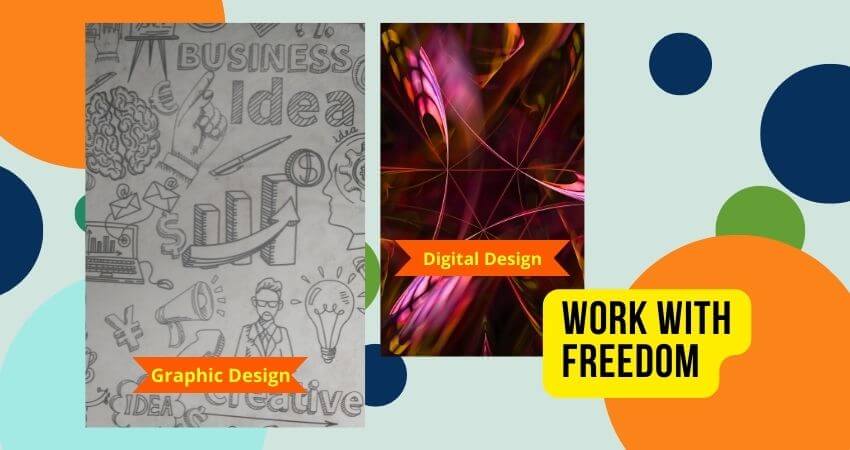Visual representation is significant in conveying messages from one party to another. It’s especially essential for businesses because they must convey a message to millions of people to conduct their activities successfully.
Digital device and graphics design both make the visual representation of a message. Both designers use their technical ability and creativity to spread a long message within a very short time through their design to the mass.
Digital design and graphic design, these two terms are used interchangeably by many people. Many of you can’t differentiate between these two. However, there are many significant differences between digital and graphic design.
In this article, we will find out all the significant differences between these two. Keep reading if you are interested.
What is Graphic Design?
Graphic design is a very old term introduced in 15000 BC to communicate visually with others. From that time till now, it has generally been used in books, magazines, newspapers, leaflets, banners, brochures, and many other static images.
For a long time, businesses have used digital marketing to conduct their marketing process.
Graphics designers generally work with typography, different colors, contrast, space, alignment, proximity, balance, etc. In short, the fundamental of graphic design is making art using text and graphics to communicate visually with people, which are essential for print.
Printed marketing materials, logos, business cards, product designs, package designs, infographics, data visualizations, etc., are the most common examples of graphic design works.
What is Digital Design?
Digital design involves movement by which we can interact on digital devices. Here, movement means using animation, 2D or 3D models, interactive pages, etc. Digital design is a comparatively new term introduced in this recent age.
It includes web design, landing page design, app design, email design, social media cover photo, E-book, digital banner, PowerPoint templates, etc.
Besides, all digital marketing materials are also made by digital designers. The scope of this sector is being enlarged day by day. So, in a nutshell, we can say that digital design is also graphics design specially made for digital devices.
Digital Design vs. Graphic Design: What are the Differences?
There are some significant similarities between digital devices and graphic design. Digital designs are almost the same in some categories as graphics design. Banner, logo, brochure, etc., can be both graphics design and digital design.
When these are made for printing materials, it’s graphic design; when you are made to use on digital devices, it will be digital design. In both designs, the same software and tools are used. On the other hand, there are many differences between these two.
Here are the most significant differences:
1. Basic Goal
The basic goal of graphic design is to make different types of art or design with graphics and text for printing materials. You will see many types of banners, posters, billboards, etc., on different walls or other places to send messages in Graphic design.
On the contrary, making all the digital content like promotional banners, covers, and brochures for different social media or other online platforms is called digital design.
2. Usability
All the deliverables from graphics design are only for print materials. That means you can only use this to print different types of banners, brochures, posters, etc. On the other hand, Digital design is only for digital devices. For example, online banners, covers, animation for promotion, e-books, etc.
Types of Deliverables They Make
Different types of Graphic design deliverables are logos, magazines, books, posters, business cards, letterheads, leaflets, etc. On the contrary, some examples of digital designs are animations, interactive elements, digital marketing elements, banners for online promotions, etc.
Trackability
In the case of graphic design, you will not be able to track whether the design has become useful or not. After printing it, it’s impossible to track them or find their efficacy.
However, in the case of digital design, you can easily track your design whether people love it or not. There are some options for the viewers to react to these designs on different social media like Facebook, LinkedIn, etc.
Besides, viewers also have the option to comment, share and download the design. This is how you can simply track your digital designs, which is impossible for graphic design.
Closing Thoughts
Digital design and graphic design both seem like the almost same concept. In some areas, there have many similarities in these terms.
For example, Digital and graphic design both are visual means of communication. Both require almost the same software and tools to make designs. Besides, both designers need creativity to give messages through their designs.
However, there are many significant differences between these two terms. After reading this article, you now know the basic differences between digital and graphic design. We hope you have got all the information you need about this topic from this article. Have a good day.

